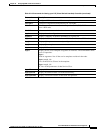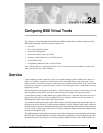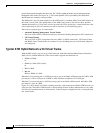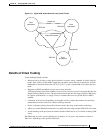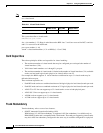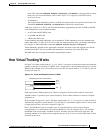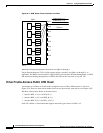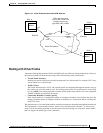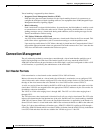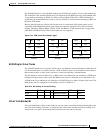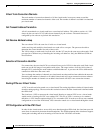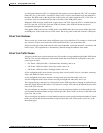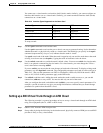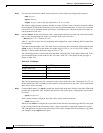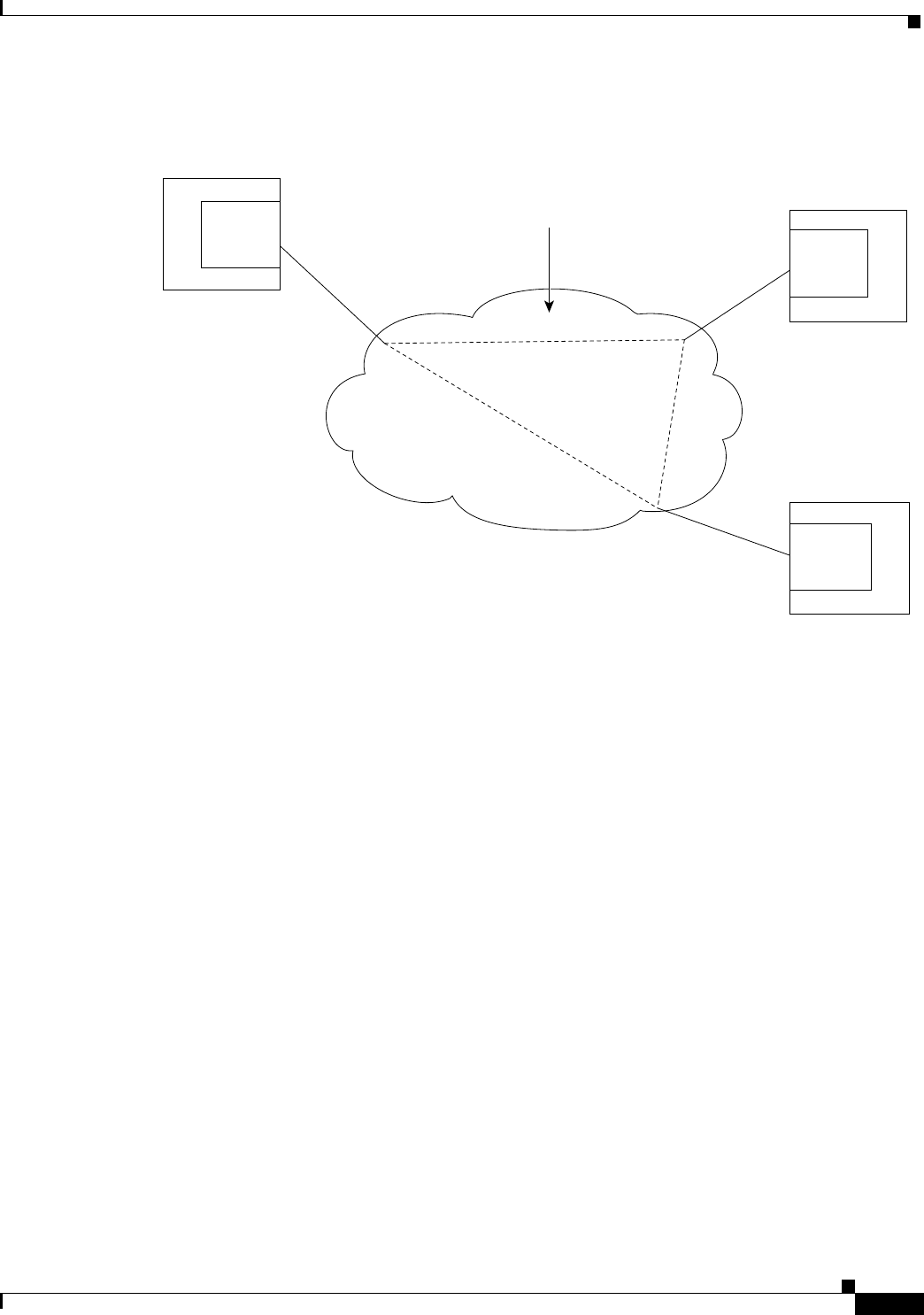
24-7
Cisco BPX 8600 Series Installation and Configuration
Release 9.3.10, Part Number 78-11603-01 Rev. D0, July 2001
Chapter 24 Configuring BXM Virtual Trunks
How Virtual Trunking Works
Figure 24-4 Virtual Trunks across a Public ATM Network
Routing with Virtual Trunks
Automatic Routing Management, PNNI, and MPLS each use different routing mechanisms. However,
the routing mechanisms meet the following criteria when dealing with virtual trunks:
• Virtual Trunk Existence
Routing has special restrictions and conid assignments for a virtual trunk. For example, VPC’smay
not be routed over a virtual trunk.
• Traffic Classes
The unique characteristics of Cbr, Vbr, and Abr traffic are maintained through the cloud as long as
the correct type of virtual trunk is used. You configure the traffic classes allowed per virtual trunk
by using cnftrk. The routing algorithm excludes virtual trunks whose traffic class is not compatible
with the candidate connection to be routed.
• Connection Identifier (Conid) Capacity
Each virtual trunk has a configurable number of connection channels reserved from the card. The
routing algorithm checks for adequate channel availability on a virtual trunk before selecting the
trunk for a route.
The characteristics of a virtual trunk used by connection routing are maintained throughout the network.
This information—virtual trunk existence, traffic classes and connection channels—is sent to every
node to allow the routing algorithm to use the trunk correctly. Routing uses only those virtual trunks
that can support the traffic type of the connection.
Public ATM network
ATM-UNI
ATM-UNI
17712
BXM 4
IGX 10
4.3.1
10.2.1
4.3
10.2
VPCs within the cloud,
one for each virtual trunk
(Virtual trunks can be
type CBR, VBR, or ABR)
BPX_A
IGX_A
BXM 5
BPX_B
4.3.2
10.2.3
5.1.1
5.1.2
5.1



